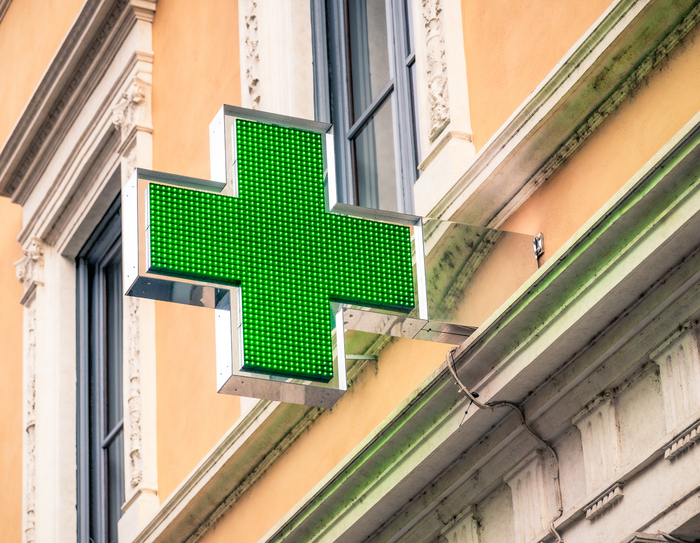They gradually disappeared from schools.
Will they come back soon for everyone?
Saliva tests, an alternative to those performed with a swab in the nose, have been offered to students since the start of the school year in September.
The child was asked to spit in a small pot, then his saliva was analyzed to track down SARS-CoV-2.
Since January, the strategy has focused on tests in the nose (antigens or PCR), in particular for practical questions.
Nasopharyngeal tests involve pushing a swab quite deep into the nose.
The RT-PCR technique (known as PCR) is the most reliable, but the result takes several hours to arrive.
A sample with the antigenic technique, carried out in a pharmacy, gives a verdict in about ten minutes.
With a nasal test, there is much less need to go into the nose.
This is the principle of the self-test, which is carried out at home.
We can finally collect saliva and scrape the throat rather than the nose.
But this type of test is much less practiced in France, whatever the identification technique.
More viruses in the throat?
Will Omicron be a game changer? Mouth or throat swabs would become more relevant. South African researchers examined 382 Covid patients, infected with either Omicron or Delta. According to their results, published on the MedRXiv platform on December 24 (but not yet peer-reviewed), a saliva PCR test would be 100% effective in detecting Omicron, compared to 86% for a nasal PCR. Taking into account the confidence intervals, there does not seem to be a significant difference. It is the opposite for Delta: 71% with a saliva PCR test versus 100% with a nasal PCR. “These results suggest higher viral shedding in saliva compared to nose with Omicron,” the authors write.
“Experimentally, this is an interesting and rather solid study.
Statistically, it lacks potency and would require confirmation on a larger population, especially since their procedure for the saliva test is not just about spitting in a jar,” remarks immuno-oncology researcher Éric Billy , who read it at our request.
Read alsoCovid-19: PCR, antigens... is France testing too much?
In detail, participants had to eat, drink or smoke nothing for 30 minutes before the test, then cough at least three times into their elbow, before dabbing the inside of both cheeks, tongue, gums and palate with a swab.
All for at least 30 seconds.
A procedure probably less painful than going deep into the nostrils, but not obvious in practice.
The HAS is looking into the subject
Several scientists have shared their own experience on the subject.
American biologist Jennifer Rohn, who tested negative several times in the laboratory when she had mild symptoms, took a sample from her throat.
The two strips on the tablet then showed a positive result, as she shared on December 27 on Twitter.
Well, there it is.
Today, with the “wrong” (ie cold) symptoms and after a string of negative LFTs, I finally took Twitter advice and swabbed my throat as well as my nose (no mean feat with that diddly stick).
If you think you might have COVID, consider adding the throat sample pic.twitter.com/YKihOKh6mE
— Prof. Jennifer L. Rohn (@JennyRohn) December 27, 2021
According to Éric Billy, one of the strongest hypotheses comes from the fact that Omicron infects the upper parts of the respiratory system (mouth, throat, trachea) more than the lungs.
"The production of virus would be greater in the upper airways, and there would therefore be a greater quantity of virus there," he explains.
“There may be a greater replication in the oral compartment”, supports with Le Figaro Cédric Carbonneil, head of the service for the evaluation of professional acts at the High Authority for Health (HAS).
However, we will have to wait for other work to be published, especially since the pre-published South African study has several limitations.
Already, a saliva test is compared to a nasal swab, while it is the nasopharynges that are performed in PCR in France.
To illustrate:
- 1st image: nasal (and again, deep nasal, you will never go that far in self-sampling)
- 2nd image: nasopharyngeal (we are just at the top of the throat) pic.twitter.com/9Diuw1ZqIX
— Bio_Saiyan (@SaiyanBio) January 18, 2022
In addition, by testing at the level of saliva, “there is a big risk of having false positives because the throat is less clean and has its own pH, which can disturb the result”, indicates a medical biologist.
The HAS tells us to “study new data on the effectiveness of different types of tests against Omicron”, and in particular antigenics and saliva self-tests.
Rejected until today, these could finally be recommended for certain categories of the population.
Children and the most sensitive people, in particular, could benefit from it.
But these samples would only come in addition to those in the nose, which remain a priori very efficient.





